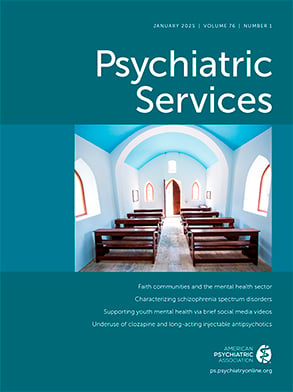I very much appreciate the thoughtful comments of Drs. Hovens and van der Ploeg, which echo and reaffirm a point of view expressed by my colleagues and me (
1) and place suicide prevention in a public health framework involving community-driven activities that promote mental health while also seeking to mitigate or prevent risks. I also agree that controlling the means of suicide—as exemplified by erecting bridge barriers, changing the composition of cooking gas, and limiting access to lethal pesticides—can be a robust method for preventing suicide (
2). And reducing stigma must be a central component to building effective prevention and mental health promotion efforts, as advocated by the President's New Freedom Commission.
At the same time, it is all too apparent that reducing the nation's suicide rate has been a challenge that has defied sustained efforts and substantial commitments of resources during the past decade (
3). Increases in suicide rates during the middle years of life far outweigh the declines among youths and young adults (≤24 years) and among elders. Comprehensive approaches to suicide prevention, such as those used by the U.S. Air Force (
4), have been shown to reduce suicide in a meaningful way when applied in a consistent, sustained, and comprehensive fashion. No single intervention aimed at one element of the population alone is sufficient to have a major impact.
What should we do now? On the basis of the epidemiological burden that we see in the United States, I would argue that it is long overdue to focus on men and women in the middle years of life in addition to youths and elders (
5). Suicide often is the final punctuation of a long story of distress and disturbed relationships; in the middle years this story typically involves many others—spouses and partners, children, parents sometimes, and employers frequently. There is a heavy toll of alcohol and drug use, recurrent mood disturbances, family violence, and years (if not decades) of decline, and many opportunities for prevention and early intervention and for socially and environmentally focused mental health promotion (strength building in the face of challenges and adversities). Whether a smoking or a heart disease analogy is employed, which we have used previously, seeking to change life trajectories must begin decades before the immediate life-ending event.
Such efforts, together with the suggestions of Drs. Hovens and van der Ploeg, may provide a path toward effectively lowering suicide rates and greatly lessening the impacts of the life-disrupting events and distress that precede them, as well as their long-lasting after-effects.

